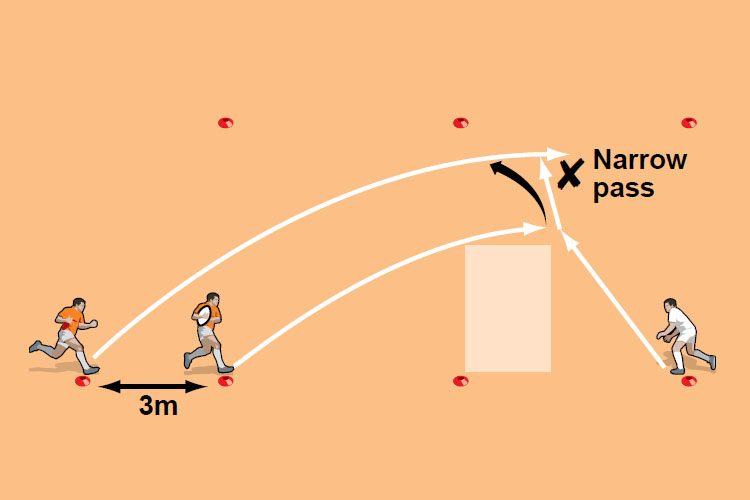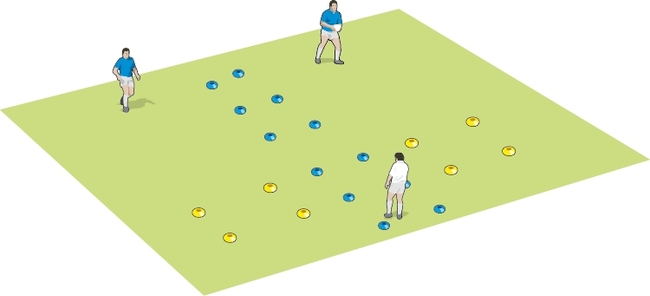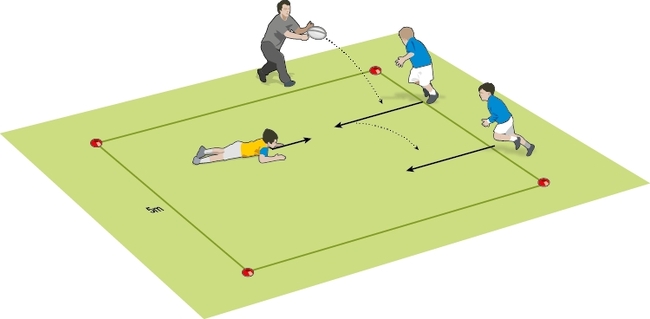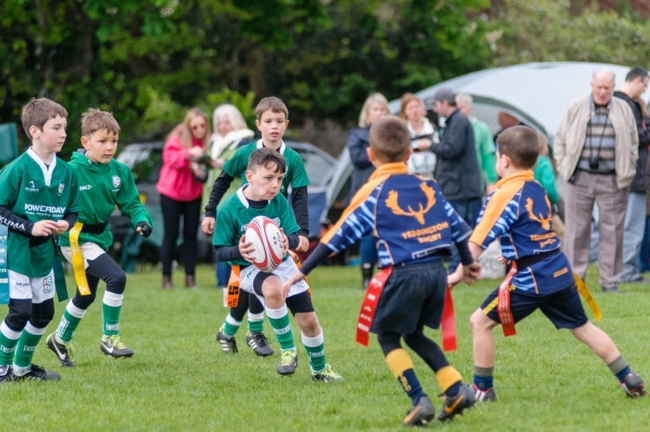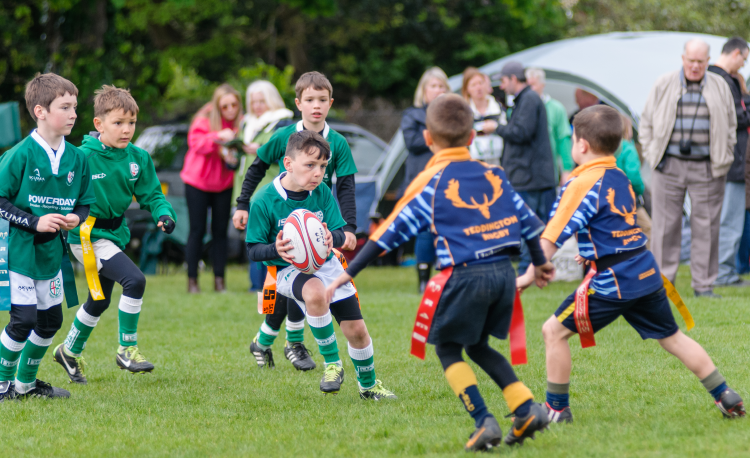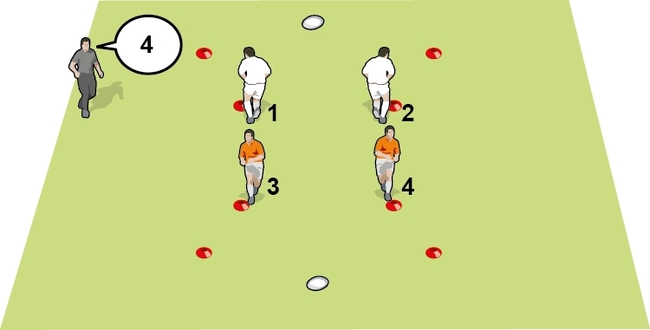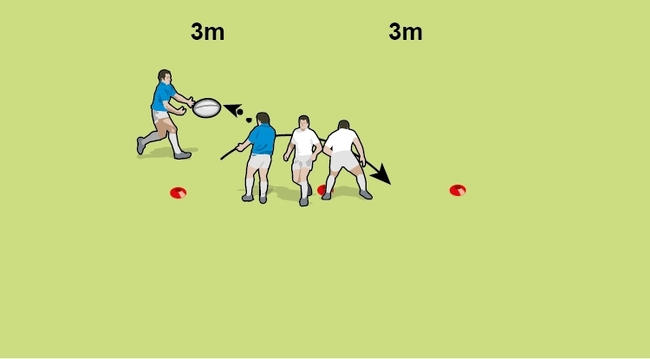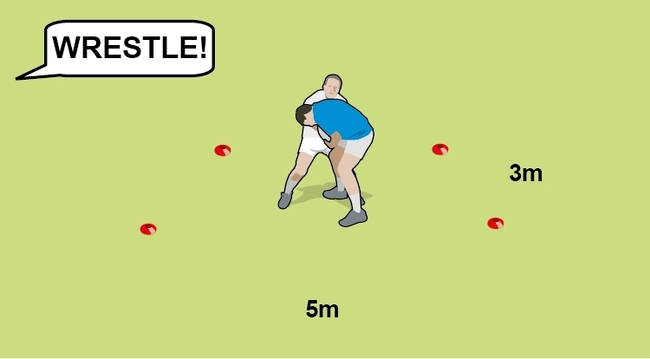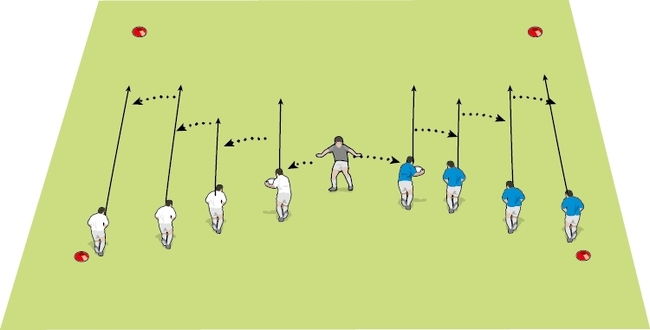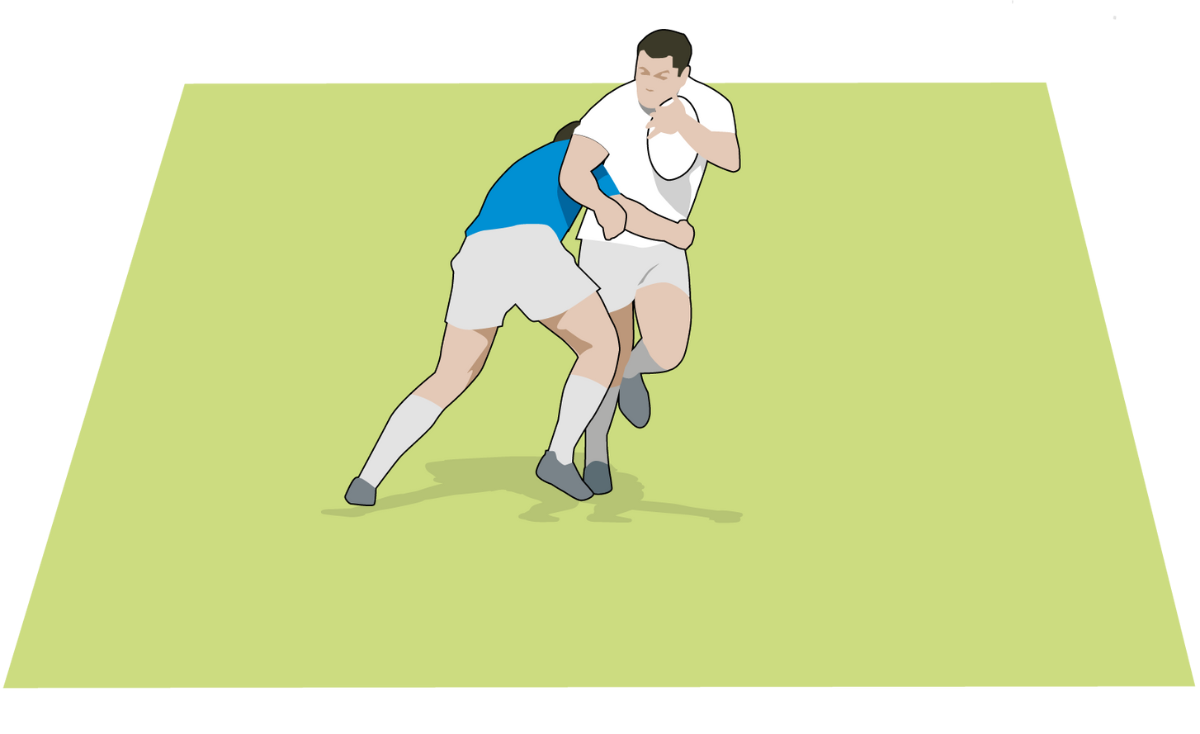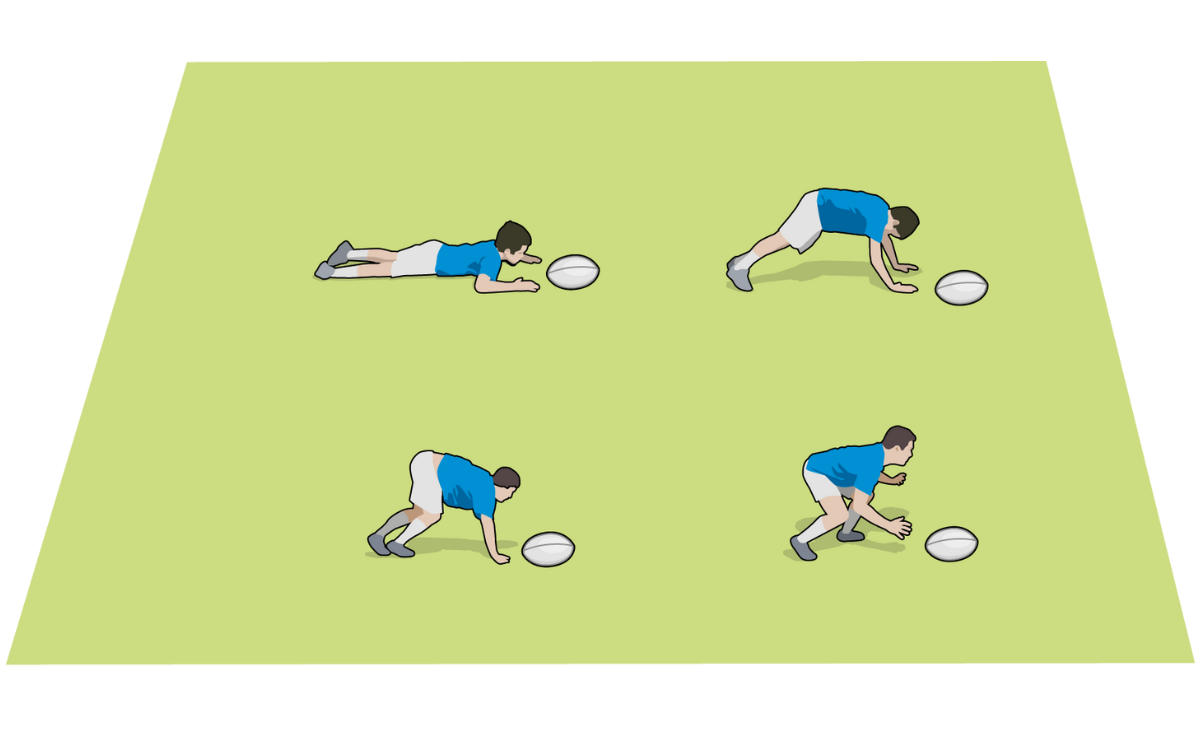Pros and cons of round the corner 2 v 1s
What is the best set up for 2 v 1s or similar overload passing decision-making activities? Lisa Rosen and Steve Johnson ponder the pros and cons of round-the-corner drills.
A TYPICAL ROUND-THE-CORNER DRILL
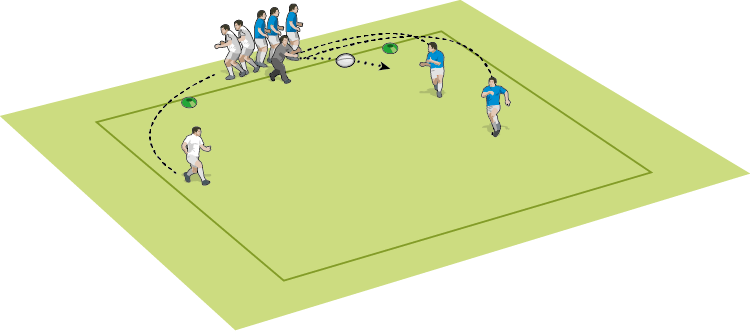
Two attackers run down the side of a box, turn around the corner, and run back into the box to receive a pass.
In the meantime, a defender runs down the same side in the opposite direction.
This creates a 2 v 1. The waiting players then step up.
AGAINST THE ROUND-THE-CORNER
Lisa Rosen, experienced coach and World Rugby coach educator from the US.
One of the staples, it seems of many coaches I have observed is the “round-the-corner” drill. This is where two attackers run back to a cone each and then turn and attack into a box as a defender runs in the opposite direction before turning to defend.
WHY THIS DOESN’T WORK FOR ME
1 It forces an unnatural barrier onto the ball carrier
As the attacker turns the “corner”, they face a touchline on their inside.
The defender’s job is now easier because they do not need to commit to an aggressive tackle if they simply want to push the attacker out of bounds.
It is unlikely we would want the ball carrier to “preserve” space in the game by running close to the touchline.
2 It reduces creativity for both attackers
Since the attacker normally “preserves” the space by attacking close to the sideline, there is a limit to what the support player can do. There are no decisions on angles of run or width of pass. The ball carrier is limited to passing wide or dummying.
3 Non-participants are poorly positioned to observe the exercise
Lots of “learning” can come by observing what works and doesn’t work.
In the set-up for a round-the-corner exercise, the next participants often line up on the side with a poor view of what is happening in the box. This reduces the ability of other players to learn from the others’ good and bad play.
SOLUTION: Enter Through the Try Zones
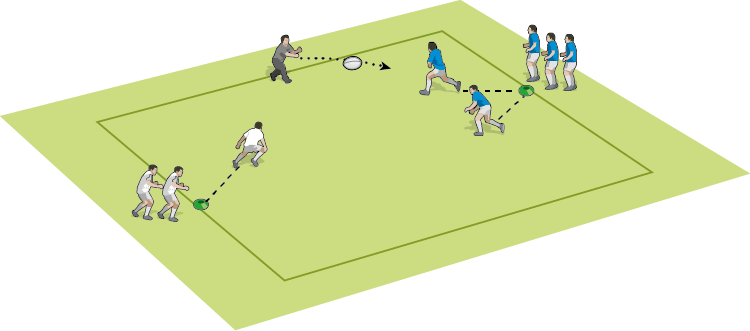
By starting the exercise through the try zones, the players can observe more, it allows more decisions from the support player and inevitably more decisions for the defender.
Make sure the defenders are back from the try zone and the ball carrier touches down the ball to score.
Continuous 2 v 1 Exercise
I like to create a more game-specific session with this type of exercise by making the whole exercise continuous.
- Split into two equal teams.
- Mark out a 10 metre wide, 20 metre long box.
- One team will defend one end and attack the other and vice versa.
- The game starts with one team attacking with two players v one defender.
- The other team attacks once the attack is over, whether successful or not.
- Make sure you tell them when the attack is over, however, it is up to the other team to know when to start the attack.
- Previous attackers and defenders need to clear out of the box as soon as the attack is over.
- They return to their teams and work out when they are next going to attack or defend. A quick attack might surprise a defender.
A DIFFERENT TAKE
Steve Johnson, an experienced level 3 coach, says that the “round-the-corner” drill is still relevant in the modern game. He offers his thoughts and a solution.
There are some good reasons why we need to be wary of “round-the-corner” drills, but there are still fundamental exercises and good for players learning the basics or returning to them.
WHAT DOES RUNNING AROUND THE CONES DO FOR THE PLAYERS?
They need to consider aligning correctly because they are arriving from a different angle.
For instance, they will be tracking back if the ball is lost behind the gain line.
The need for the first receiver to react quickly to, first, the receipt of the ball, and second to a defender coming up quickly. This might require a split-second decision on the best play. Otherwise the first receiver can see the defender all the way through if the players turning their backs to run back around the cones.
There is also a need for the support runner to communicate. If they are not running back to the cones, then the first receiver can always see where their support runner is.
The defence also has to make a decision on the angle to take, and whether to go for the ball carrier, or supporter.
ROUND-THE-CORNER ALTERNATIVE
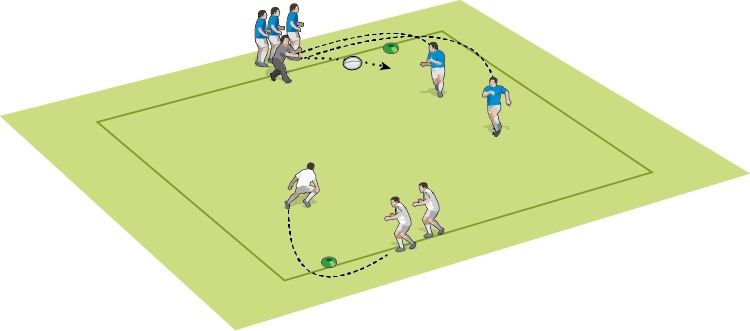
In an alternative exercise, I would have the defender running around a cone from the other side of the box. They would also have to run to the middle of the try line before entering the box. I normally feed the ball to the first receiver, concentrating on three coaching points to start with:
- The first receiver runs straight to keep defender in the same channel. The supporter maintains a good receiving angle (does not run too fast). The first receiver passes when he moves into the “contact zone” of the defender (so that the defender cannot run across to cover the supporting runner).
- The first receiver has the option of running diagonally, cutting back in, or dummy passing, all depending on the angle and action of the defender.
- Attackers and defenders run back to join their starting groups, and spread out along the line to “cheer on” their team mates. This noise is game realistic and adds a different pressure.
TALKING AND CALLING TIME
As the space between the attackers and defenders closes down, it is essential that the supporting player talks and calls to the ball carrier. It aids the decision-making process as well as putting doubt into the mind of the defender.
Related Files
Newsletter Sign Up
Coaches Testimonials

Gerald Kearney, Downtown Las Vegas Soccer Club

Paul Butler, Florida, USA

Rick Shields, Springboro, USA

Tony Green, Pierrefonds Titans, Quebec, Canada
Subscribe Today
Be a more effective, more successful rugby coach
In a recent survey 89% of subscribers said Rugby Coach Weekly makes them more confident, 91% said Rugby Coach Weekly makes them a more effective coach and 93% said Rugby Coach Weekly makes them more inspired.
Get Weekly Inspiration
All the latest techniques and approaches
Rugby Coach Weekly offers proven and easy to use rugby drills, coaching sessions, practice plans, small-sided games, warm-ups, training tips and advice.
We've been at the cutting edge of rugby coaching since we launched in 2005, creating resources for the grassroots youth coach, following best practice from around the world and insights from the professional game.
